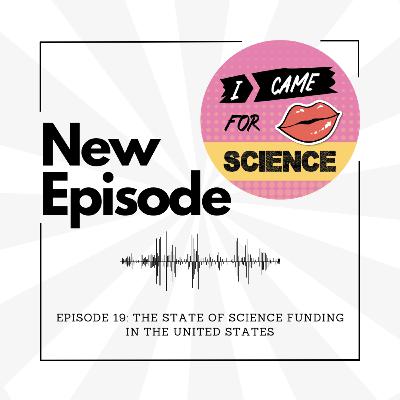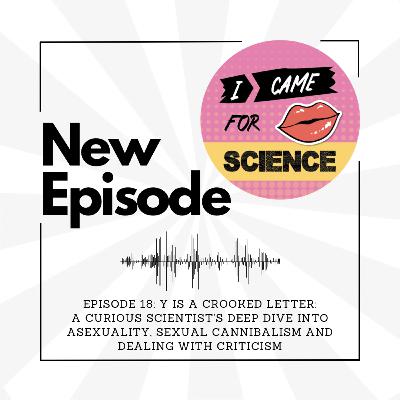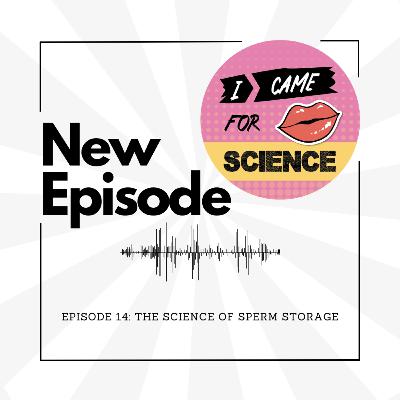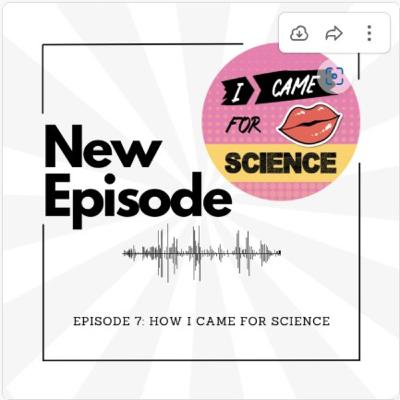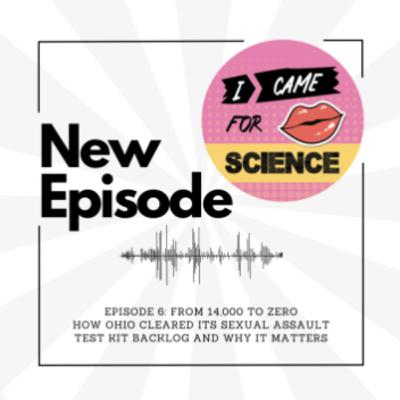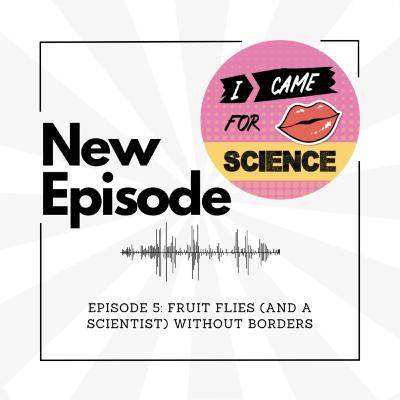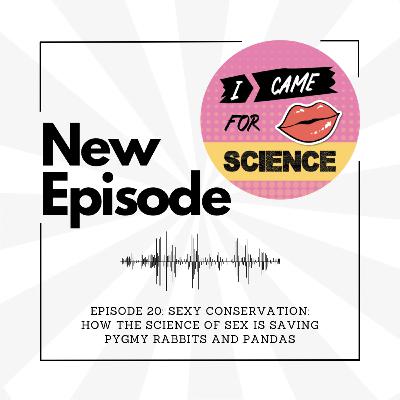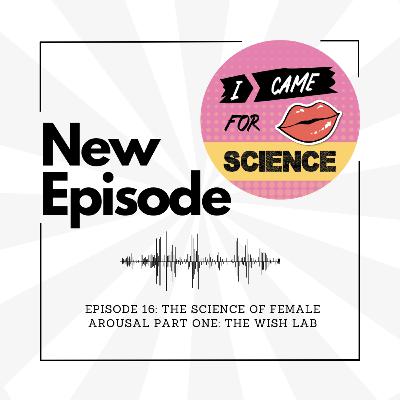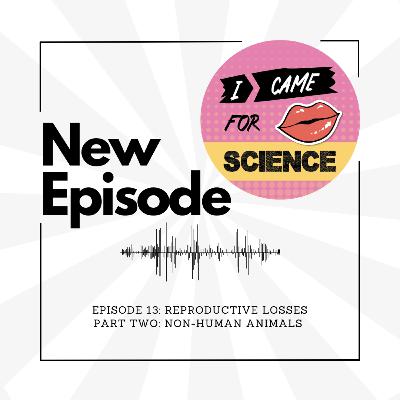Discover I Came For Science
I Came For Science

I Came For Science
Author: Laura Sirot
Subscribed: 1Played: 1Subscribe
Share
© Laura Sirot
Description
Welcome to I Came For Science: a show that explores all things sex, reproduction, and inclusion in STEM! Your host is Laura Sirot, a professor of Biology who has been studying animal sex for over 30 years. Join us as we normalize talking about the intersections of sex and science, as well as hearing about the lived experiences of the scientists that study it. To get in touch, email us at icameforscience@gmail.com or message us on X or Instagram @icameforscience. Visit our website at: https://www.icameforscience.org/
22 Episodes
Reverse
Welcome back to Season 2 of I Came For Science. This episode is a follow-up to Episode 6 from Season 1 about the clearing of Ohio's backlog of sexual assault testing kits. In this episode, Laura interviews forensic nurse, Joey Compton, of Aultman Serenity Program about what survivors of sexual assault and their supporters need to know about sexual assault evidence collection.
In this episode, we embrace a different meaning of our title "I Came For Science" by standing up for science funding. One of our production team members, Lain Patton, interviews our host, Laura Sirot, about how science funding works in the U.S. and what the recent changes mean for the current and future states of science, scientists, and the general public.
Were you that kid who always kept asking "But, why?" after adults in your life answered questions. Or, do you know a kid like that? Our guest for this episode, Dr. Nathan Burke, was that kid. His parents and teachers would get annoyed by all his questions until he found "his people" among evolutionary biologists. Evolutionary biologists persistently ask "But, why" questions about the way the biological world works. In this episode, Dr. Burke explains how his questions led to new hypotheses about asexuality, sexual cannibalism, and, even, dealing with criticism.
In this episode, we continue exploring the science of female arousal. Laura interviews Maureen Pollack, a mompreneur. She is the inventor of the WaterSlyde, a water-based device designed for female pleasure. Maureen explains how she developed the idea and the prototype for the WaterSlyde and what she learned about female arousal, the sex toy industry, and, even, plumbing along the way! It is a delightful story of self-discovery that has led to many satisfied customers.
In our final episode of Season 2, we explore the science of sperm storage. Sperm storage occurs when sperm viability is maintained outside of the male reproductive tract. This process happens, at least for some time period, naturally in all internally-conceiving animals. Sperm storage is also used by humans for assisted reproduction and fertility preservation. We learn about both processes through interviews with Dr. Teri Orr who studies bat reproduction and Matthew Hudnall who is the director of a sperm bank and a fertility preservation center.
This episode follows up on our last episode about family building. In this episode, Laura talks with Dr. Christa Craven about reproductive losses, especially as they are experienced by people who are LGBTQ+. These losses come in a variety of forms and times during the family building process and can be impacted by environmental and social stresses. Laura and Christa also discuss how the causes of reproductive losses in humans relate to reproductive losses in non-human animals, which is the focus of our next episode.
There has been a lot of talk this year about sex and gender. In this episode, Laura interviews Dr. Gita Kolluru who studies variation in sexual morphology and behavior across non-human animals. Dr. Kolluru explains the difference between sex and gender. Then, she explains the tremendous variation that occurs in sexual traits in humans and how this variation comes about.
In this last episode of Season 1, Laura is interviewed by her former student and current co-host, Natalia, about her winding journey of studying the science of sex and reproduction. They discuss Laura’s lows as she struggled with not feeling like she belonged as well as her highs as she realized her “outsider” status often made her ask questions that no one had thought to ask before. Natalia and Laura discuss how important it is to have people with different lived experiences contribute to scientific knowledge and end by encouraging everyone to come for science!
Imagine if you were sexually assaulted, decided to get evidence collected from your body, and then that evidence sat uninvestigated for decades. In 2010, this was the reality for about 14,000 victims of sexual assault in Ohio alone. In this episode, Laura interviews criminologist Dr. Rachel Lovell of Cleveland State University. They discuss how Ohio cleared the sexual assault test kit backlog over a five year period and how the results have been used to prosecute perpetrators in Cuyahoga County, becoming a role model for other parts of the country. In addition, Dr. Lovell shares how the results of these analyses have resulted in new findings about patterns of sexual assault and new approaches to caring for victims.
Laura talks with her colleague, Dr. Diana Pérez Staples, a research professor at the Universidad Veracruzana in Xalapa, Mexico, who has conducted research in six different countries on four different continents. Dr. Pérez Staples provides a cross-cultural perspective on the challenges and benefits of being a researcher in developing countries. She then discusses the importance that role models and words have on making aspiring scientists feel welcome or unwelcome in STEM.
Please join us for a very special episode. It’s a story about one man’s decision to take the HIV pre-exposure prophylaxis, PrEP. But it is so much more. It is a story of love between a mother and son. It’s a coming out story. It’s a story about how trans-generational trauma can be turned into gratitude, resilience, and hope. It's a story about how the science of sex saves lives.
Welcome to I Came For Science: a show that explores all things sex, reproduction, and inclusion in STEM! Your host is Laura Sirot, a professor of Biology who has been studying animal sex for over 30 years. Join us as we normalize talking about the intersections of sex and science, as well as hearing about the lived experiences of the scientists that study it. To get in touch, email us at icameforscience@gmail.com or message us on X or Instagram @icameforscience.
In this week’s episode, we’re exploring pubic hair! Why we have it, common pubic hair removal practices, and potential risks (or not) of pubic hair removal. Laura is joined by her 30-something former student, her aesthetician, and a fellow scientist to discuss all things pubic hair!
Did you know that animal penises come in a wide variety and that some animals have bones in their penises? In this episode, Laura talks with biologists Dave Hosken and Matt Dean about the wide variety of penises found in different animal species. We discuss some of our favorite examples and then explore hypotheses for why such variation evolved. Matt shares his lab's research findings on the evolution, function, and development of the penis bone (a.k.a., the baculum).
Did you ever wonder why there are not more male contraceptives? In this episode, team member Daphne Trillana asks the question "where are the promised new male contraceptives"? Laura and Daphne discuss this issue and then Laura talks with two experts in the field: Logan Nickels of The Male Contraceptive Initiative and Dr. Stephanie Page, an endocrinologist who develops and studies new methods of male contraception. Together, they explain the history of the development of male contraceptives, current research and promising directions, and what the future of male contraceptives looks like.
Welcome back to Season 4 of I Came For Science. In this episode, Laura interviews Dr. Meg Martin about her research on conservation breeding. Conservation breeding is a method of increasing the populations of endangered and threatened species by having them breed in captivity and then releasing the resulting offspring into the wild when they are old enough. Traditionally, breeding pairs were chosen to maximize the genetic diversity of the population. However, until relatively recently, the important role of mate choice was not considered. Dr. Martin's work has changed this approach to use the science of sex to improve reproductive outcomes.
We are now embarking on an exploration of the science of female arousal. In the first episode of this series, Laura interviews her former student and current colleague, Harper Jones. Harper is pursuing a PhD in clinical psychology in the Women's Integrative Sexual Health (WISH) Lab. In this episode, she explains the methods that the WISH lab uses to measure arousal and what research questions can be addressed with these methods. She continues on to discuss her research on the reasons that people use alcohol or drugs in the context of sexual activity, especially for people with previous sexual trauma. Her results may surprise you!
Welcome back to Season 3 of I Came For Science. If you are just joining us as a listener, we encourage you to listen back to Seasons 1 and 2 to hear our episodes on a range of topics including pubic hair, polyamory, spider sex, reproductive losses, and queer family building. Whether you like it or not, your children are going to learn about sex. Wouldn't it be good if they learn accurate information from a trusted adult? In this episode, we hear from Sarah Dahlston, senior director of education at Planned Parenthood of Southwest Ohio. Sarah explains to us what scientific studies of sex education tell us about the relative effectiveness of abstinence only education and comprehensive sex education. She also debunks common misconceptions about sex education and informs us about the current laws regulating the teaching of sex ed in Ohio.
This episode follows up on Episode 12 which explored reproductive losses in humans. In this episode, Laura interviews primatologist and endocrinologist Dr. Jacinta Beehner about reproductive losses in non-human animals. Jacinta explores this topic through the lens of female reproductive strategies, using non-invasive techniques to track the reproductive physiology of wild primates.
In this episode, Laura interviews Liam Kali a licensed midwife who is a pioneer in extending the practice of midwifery to queer families. Liam literally wrote the book about queer family building through conception. Liam describes their professional and personal journey becoming a parent, a doula, and a midwife, as well as the successes and challenges they faced along the way. Liam describes methods that queer people use to conceive. They also explain the problems that arise when queer people trying to conceive are treated with the same approaches that are used for people experiencing infertility.
Are you curious about polyamory? If so, you’ve come to the right place. In this episode, Laura discusses scientific and personal aspects of polyamory with Amanda Anastasia Paniagua. Amanda is a graduate student in
higher education administration, with an interest in the science of polyamory. Amanda shares definitions and corrects common misconceptions about polyamory. Laura
and Amanda are then joined by Lee, Amanda’s non-marital partner, who shares his own experiences and perspectives about polyamory. Amanda and Lee also explain how being polyamorous intersects with other aspects of their identity.



